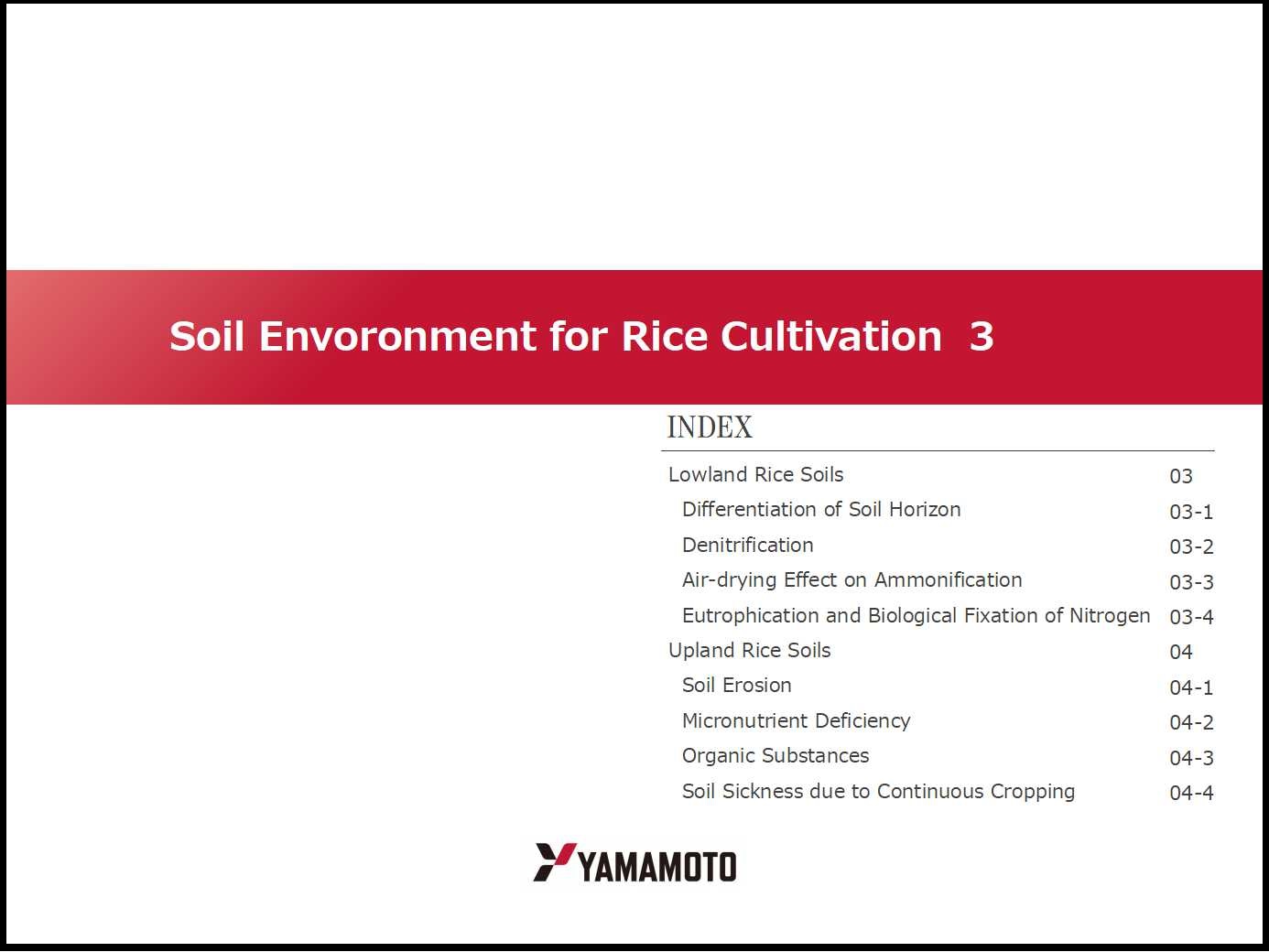14. Soil Environment for Rice Cultivation 3
- INDEX -
Lowland Rice Soils
Differentiation of Soil Horizon
Denitrification
Air-drying Effect on Ammonification
Eutrophication and Biological Fixation of Nitrogen
Upland Rice Soils
Soil Erosion
Micronutrient Deficiency
Organic Substances
Soil Sickness due to Continuous Cropping
Lowland Rice Soils
Lowland soils come in a variety of forms depending on weather conditions, topographic conditions, water supply levels, ,ethods of ciltovation, etc. However, the typical characteristics of lowland soils under irrigated water are basically as follow.
Differentiation of Soil Horizon
When the field is kept in a submerged condition, various microorganisms consume oxygen in the soil, dissolve organic substances, and create an anaerobic condition. Organic nitrogen is disorganized and ammonium nitrogen is produced. Manganese dioxide is reducted to bivalent manganese, and ferric iron to ferrous iron, thus gradually creating a reductive condition of top soil and forming a gray reduction layer. On the other hand, a few millimeters to one centimeter of the top soil will have an oxygen supply from the surface of the field, which therfore forms a reddish oxidized layer of ferric iron.
Denitrification
Ammonium is the reduced layer is absorbed by rice roots, but that in the oxidized layer is reduced by nitrifying bacteria into nitric acid. The nitric acid will then penetrate the reduced layer; it is converted to nitrogen gas and will escape into the atmosphere. Therefore, nitrogen fertilizer should be applied as deep into the arable soil as possible.
Air-drying Effect on Ammonification
Air-drying the soil before submersing it will make organic matter in the soil to be easily dissolved by microorganisms. Accordingly, the air-dried soil will have a higher content of anmonia nitrogen formed after submersion.
Eutrophication and Biological Fixation of Nitrogen
A considerable amount of various nutrients is supplied by the irrigation water to lowland fields.
A certain kind of blue-green algas fixes atmospheric nitrogen and enriches lowland fields.
